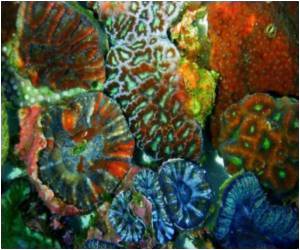
The study, say the authors, will help to conserve some of the world's most important coral reefs by identifying reef systems where biodiversity is high and stress is low, ecosystems where management has the best chance of success.
"Coral reefs around the globe are under pressure from a variety of factors such as higher temperatures, sedimentation, and human-related activities such as fishing and coastal development," said Joseph M. Maina, WCS conservationist and lead author on the study.
"The key to effectively identifying where conservation efforts are most likely to succeed is finding reefs where high biodiversity and low stress intersect."
The map shows that coral regions in Southeast Asia, Micronesia, the Eastern Pacific, and the central Indian Ocean experience high stress, while the Caribbean, Great Barrier Reef, Central Pacific, Polynesia, and the Western Indian Ocean-contained moderate to high rates of exposure as well as high rates of reducing factors.
"The study provides marine park and ecosystem managers with a plan for spatially managing the effectiveness of conservation and sustainability," said Dr. Caleb McClennen, Director of the Wildlife Conservation Society's Marine Program. "The information will help formulate more effective strategies to protect corals from climate change and lead to improved management of reef systems globally."
Advertisement
Source-ANI














